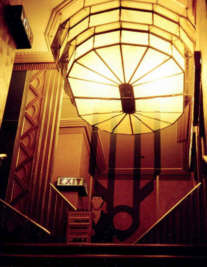
Rebirth - 1960 onwards

It was at this time that theatre organ enthusiasts began to band together, and in 1960, Divisions of the Theatre Organ Society of Australia (TOSA) were formed in New South Wales and Victoria.
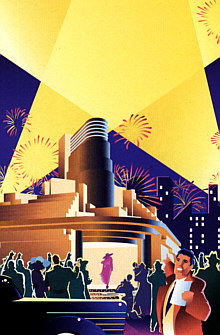 When it was announced that the Wurlitzer organ at the Capitol
Theatre, Melbourne, was to be sold, the members of the Victorian
Division of TOSA decided to buy it and reconstruct it in a suitable
environment. Their bid was accepted, and they were fortunate in
finding a sympathetic management at the Dendy Theatre, Brighton,
who were keen for it to be installed in their theatre. It was played for
the last time at the Capitol in 1963 by Horace Weber, who had
originally inaugurated it there nearly forty years previously. On 27
April, 1967, Horace Weber was again at the console, assisting British
organist George Blackmore to reopen the instrument at the Dendy
Theatre. Some twenty years later, the Dendy Theatre was divided into
two smaller theatres; fortunately, the Wurlitzer organ was able to be
retained in the new layout.
When it was announced that the Wurlitzer organ at the Capitol
Theatre, Melbourne, was to be sold, the members of the Victorian
Division of TOSA decided to buy it and reconstruct it in a suitable
environment. Their bid was accepted, and they were fortunate in
finding a sympathetic management at the Dendy Theatre, Brighton,
who were keen for it to be installed in their theatre. It was played for
the last time at the Capitol in 1963 by Horace Weber, who had
originally inaugurated it there nearly forty years previously. On 27
April, 1967, Horace Weber was again at the console, assisting British
organist George Blackmore to reopen the instrument at the Dendy
Theatre. Some twenty years later, the Dendy Theatre was divided into
two smaller theatres; fortunately, the Wurlitzer organ was able to be
retained in the new layout.
Meanwhile, the NSW Division of TOSA took similar action, and in 1964 purchased the ten-rank Wurlitzer organ from the doomed Prince Edward Theatre, Sydney. They reinstalled it in the Town Hall, Marrickville, where Ian Davies reopened it on 27 November, 1968.
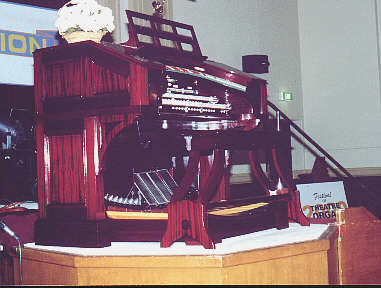
Marrickville Town Hall
On 7 November, 1964, the auditorium of the Lyceum Theatre, Sydney, was badly damaged by fire. The Christie organ was luckily almost undamaged. The remains of the theatre were demolished, and a completely new building, including a new Lyceum Theatre, was constructed on the site. The new theatre opened in June, 1966. [Ross Thorne, Cinemas of Australia via the USA, Sydney, 1981, p. 208]
As the Lyceum organ was used regularly for the church services held at the Lyceum on Sundays, it was reinstalled in the new theatre, but with a new, church-style stopkey console in a small gallery high in the left-hand proscenium wall. Much of the unification was eliminated in the revised specification, and the percussions and effects were removed. The Vox Humana rank was replaced by a two-rank Mixture. The original console was initially purchased by a private individual, but was later adapted to control the Blackett & Howden organ installed by the Victorian Division of TOSA in Cinema North, Reservoir, Vic.
A significant event in 1964 was the appointment of a young man named Tony Fenelon to play the Regent Theatre, Melbourne, organ, little used since 1961, for a four-week Christmas season. His fresh approach made him such an attraction at the theatre that his initial engagement was extended until the theatre closed in 1970. During that period, Tony Fenelon made a number of recordings of the organ, which were available not only throughout Australia, where they gained him several Gold Disc awards, but also around the world.
By the early 1970s, there were TOSA Divisions in all States and the ACT, all of which have acquired and installed organs of their own. Suitable organs in Australia were in short supply, and consequently were fetching very high prices. In contrast, in Britain, the main cinema circuits could hardly get rid of their multitude of organs quickly enough, at rock-bottom prices.
Australian enthusiasts were not blind to this source of organs. British organs were also mainly installed in the 1930s, to much brassier and snappier tonal designs than the 1920s-style Australian organs. This gave them a totally different sound. Thus, several were purchased by both TOSA and individuals, and of particular interest were several Compton instruments, a marque not previously heard in Australia. Their all-electric consoles and different pipe voicing add a new dimension to the Australian theatre organ picture.
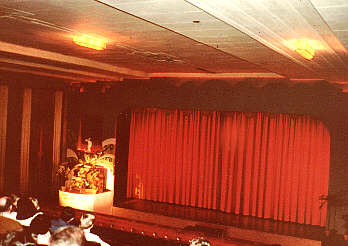
Mecca, Kogarah - January 1979
Margaret Hall at the Console
Of particular note was the purchase by the owner of the Mecca Theatre, Kogarah (formerly the Victory Theatre), of the Wurlitzer organ from the Ritz Theatre, Richmond, Surrey, England. The previous owner of the Victory Theatre had sold its Christie organ only a few years earlier. The Wurlitzer was installed in 1978. Unfortunately, a decision some years later to convert the theatre into a multi-screen complex led to the organ's removal and sale.
Majestic, Pomona [Photo: Ron West]
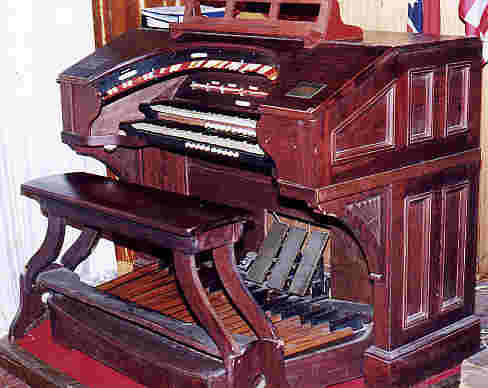
Another interesting development was the discovery by Ron West, the owner of the Majestic Theatre, Pomona, in Queensland's Sunshine Coast hinterland, that silent films accompanied by Ron at the small three-rank pipe organ he was installing in the theatre, were bringing in better returns as a tourist attraction than the normal run of films. This theatre has now become the only commercial cinema in Australia, and probably the world, to enter the twenty-first century showing exclusively silent films. The organ has also been enlarged onver the years, so it now comprises seven ranks of pipes by various builders.
In 1987, during the refurbishment of the Orpheum Theatre, Cremorne, NSW, the owners purchased and had installed there a three-manual, twelve-rank Wurlitzer organ, originally installed in a theatre in Fresno, California.
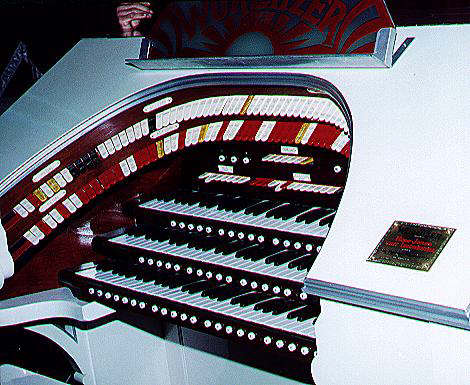
Orpheum, Cremorne - April, 2000
When it was decided to restore and reopen the Regent Theatre in Melbourne, which had been closed, stripped of fittings and boarded up for some twenty-five years, the new owners included a theatre organ in their budget. As a result, on 5 April, 1999, organists Lyn Larsen and Tony Fenelon performed the inaugural recital at a four-manual, thirty-six-rank Wurlitzer organ, originally built in 1921 (as a 4-32 Style 285) for the Granada (Paramount) Theatre, San Francisco. This is now the largest theatre organ in Australia.
The South Australian Division of TOSA, which had already installed the Wurlitzer organ from the Plaza Theatre, Melbourne, in an Adelaide school, took the enterprising step in late 1978 of purchasing their own cinema, the Capri Theatre, Goodwood, to house a four-manual, sixteen-rank composite organ they had purchased from an enthusiast in Darwin. Not only have they installed the organ (opened at Easter, 1983), but they run the cinema as a profitable commercial venture, to the extent that within a few years they had paid off the mortgage under which they acquired the theatre. In the meantime, the organ has been enlarged to twenty-nine ranks, the work being completed in 1995.
The musical horizons of Australian audiences have been broadened by TOSA's policy of inviting overseas organists to play concert tours here. As can be imagined, these require great cooperation between the various TOSA Divisions, but the rewards are great in that all can enjoy the playing of the finest international artists. TOSA also holds annual Easter organ conventions, hosted by the various Divisions in turn, which provide not only musical enjoyment and socialising, but also form an excellent forum for the exchange of ideas and information. Although the Divisions may be separated by the vast distances which characterise the country, they are united in their enthusiasm and dedication, as witnessed by the ready assistance offered to the writer in compiling his research data.